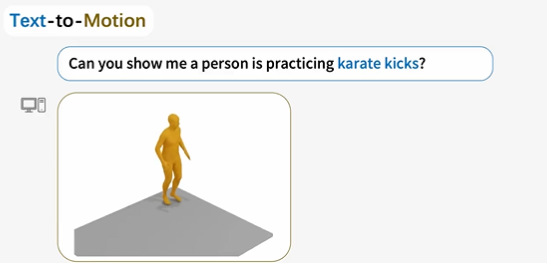Multimodal Motion Language Model MotionGPT Converts Language Instructions into 3D Human Motions
-
MotionGPT is an astonishing technological innovation that unifies language and motion, transforming language instructions into captivating 3D human movements. Inspired by instant learning, this model is pre-trained with mixed motion-language data and fine-tuned through prompt-based Q&A tasks, achieving exceptional performance.

Project address: https://top.aibase.com/tool/motiongpt
Its operating principle is similar to converting 3D motions into motion tokens, akin to the process of generating word tokens. The model achieves seamless integration between motion and text by treating human motion as a specific language for modeling and training. To handle human motion, MotionGPT employs discrete vector quantization, transforming 3D motions into motion tokens, a process analogous to generating word tokens.
Researchers have demonstrated MotionGPT's exceptional performance in extensive experiments. The model has achieved state-of-the-art results across multiple motion tasks. These tasks include text-driven motion generation, which involves generating corresponding human movements based on textual descriptions; motion captioning, which may involve converting movements into textual descriptions; motion prediction, which involves forecasting subsequent movements; and intermediate motion generation, which may involve creating movements between two given motions.
MotionGPT's uniqueness lies in its ability to understand and generate engaging human movements from fragmented language instructions, whether it's kicking or dancing, the model responds quickly. This novel motion language model brings unprecedented possibilities to fields such as virtual reality and film production. Overall, MotionGPT is not only a technological breakthrough but also a significant advancement in human-computer interaction, skillfully merging language and motion to create new application prospects.
